Commercial Accommodation Facilities See Large Increases in December and All of 2021
ZAGREB, 13 Feb 2022 - A total of 70.2 million bed nights were generated in commercial accommodation facilities in Croatia in 2021, 72% more than in 2020, with 63 million or 78% generated by foreign tourists, leading to a 297.6% increase in bed nights generated by foreign visitors in December.
In addition to the huge increase in bed nights compared to 2020, 12.8 million or 82.5% more tourists stayed in commercial accommodation facilities in 2021, and of that,10.6 million were foreigners, a 92% increase year-on-year, show data from the Croatian Bureau of Statistics (DZS).
In 2021, 2.1 million domestic tourists stayed in commercial accommodation facilities, or 46.6% more than in 2020, generating 7.3 million bed nights, up 36% from 2020.
December very good in terms of tourism results
In December 2021 alone, 117,400 domestic tourists stayed in commercial accommodation facilities, a 151% increase year-on-year, generating 227,200 bed nights or 123.2% more bed nights year-on-year.
An even greater increase on the year was generated by foreign tourists in December - there were 118,600 arrivals, an increase of as much as 656%, and 326,700 bed nights, an increase of 297.6%. Most bed nights were generated by Slovenians, Austrians, Germans, Russians and Italians.
Zagreb was among the most popular destinations visited in December, accounting for almost 29% of the total bed nights in that month, followed by Opatija and Split.
Hotels generated the most bed nights in December (54.3%), which was 4.7 times more than in December 2020, followed by rented rooms, apartments and holiday homes.
For more, check out our dedicated travel section.
Port For Smaller Boats Inaugurated in Rovinj
ZAGREB, 15 Sept, 2021 - The San Pelagio port, a new, HRK 53.4 million (€7.12 million) investment in the northern Adriatic city of Rovinj, which is expected to relieve the burden on the Andana port in the city centre, was opened on Wednesday.
The new port is intended exclusively for personal vessels up to eight metres in length, the Rovinj Port Authority said.
Port Authority head Donald Schiozzi said the new port was being opened ahead of 16 September, the Day of the City of Rovinj and its patron saint, St. Euphemia.
Mayor Marko Paliaga recalled that construction work on the new port started in late 2019, noting that currently more than 1,000 smaller vessels are registered in the city.
The largest part of the investment was contributed by Rovinj and its port authority, HRK 8.5 million was contributed by the Ministry of the Sea, Transport and Infrastructure while Istria County participated with HRK 1.6 million.
Josip Bilaver, State Secretary at the Ministry of the Sea, Transport and Infrastructure and the government's envoy at the inauguration of the port, said the government had recognised the importance of investing in port infrastructure and would continue with such projects.
(€1 = HRK 7.5)
For more about travel in Croatia, follow TCN's dedicated page.
Over 10,000 Yachts and Boats to be Removed From Registry Over Unpaid Fees
ZAGREB, 8 Sept, 2021 - Over 10,000 vessels will be erased from the Croatian registry of boats due to the failure of their owners to pay the navigation safety fee in 2019 and 2020, the Večernji List daily reported on Wednesday.
In late 2020, the Ministry of the Sea and Transport started bringing order to the registry, and so far 21,814 vessels have been removed from the registration list, the daily quoted the ministry as saying.
In October, the ministry will issue decisions on the removal of an additional 10,000 from the registry after it was established that until 15 August this year their owners had failed to pay the navigation safety fee for 2019 and 2020. The navigation safety fees in arrears for 2019 and 2020 exceed HRK 5 million (€666,000).
This national registry covers all Croatian nationality vessels.
Notices of possible removal from the registry will be also forwarded to all port authorities in Croatia and marinas' concession holders.
For more about travel in Croatia, follow TCN's dedicated page.
Adriatic Heavy Metals: New Research Dives Deep into the Matter
September 1, 2021 - New research led by the scientists from Ruđer Bošković Institute (IRB) concerns Adriatic heavy metals. The current concentrations are small but worth monitoring. Learn more here.
With scientists from the prestigious Ruđer Bošković Institute (IRB) already publishing their results from measuring the salinity of the Adriatic, the new endeavors show that salt isn't the only thing worth exploring in Croatia's geographical and tourist ace.
IRB scientists Abra Penezić, Andrea Milinković, Saranda Bakija Alempijević, and Sanja Frka, alongside their colleague Silva Žužul from the Institute for Medical Research and Occupational Health in Zagreb, authored a scientific article ''Atmospheric deposition of biologically relevant trace metals in the eastern Adriatic coastal area'' and published it in the renowned multidisciplinary journal - Chemosphere.
The research was focused on sedimentation traces of atmospheric metals on the surface of the Adriatic sea. The metals that were traced in this research were zinc, copper, lead, cobalt, nickel, and cadmium. With all of them being heavy metals (not in a fun, artistic way like Metallica or Iron Maiden) that pose a serious threat to human health, keeping a close eye on their levels in the Adriatic is a more than important task.
''Atmospheric transmission isn't just significant, it's often the dominant way in which natural and anthropogenic (man-made) transfers occur from land to the marine area. Once injected through processes of dry or wet sedimentation, atmospheric flying particles or aerosols become the outside source of nutritious but also toxic matter for marine ecosystems. Atmospheric sedimentation can be of significant value for waters that are poor in terms of nutritious salts, such as the area of central Adriatic,'' informed IRB in its press release.
They added that the coastal area of the Adriatic sea is under the constant influence of man-made aerosols of the urban and industrial areas of continental Europe. In addition, spring and summer see the influx of Sahara dust, and with the coastal area being a high-risk area of open fires, aerosol contribution increases. However, IRB states that the effect of fire aerosols on surface maritime systems still isn't being properly researched to this day.
''In this research, we looked at the variability of the concentration of biologically significant metals in traces and their sedimentation on the surface waters of the central Adriatic. At the Martinka sea station, we did a six-month-long sampling of PM10 particles, total sedimentation matter, seawater from a depth of one metre and the surface microlayer as the border between the sea and the atmosphere,'' explained the leading author, Dr. Abra Penezić.
PM10 is a problematic particle as it remains for a very long time in the atmosphere due to its small size and ability to remain there, warns the Belgian Interregional Environment Agency.

Dr. Abra Penezić © Ruđer Bošković Institute
The research showed that in colder periods of the year, the increase of metal traces of zinc, cadmium, and lead in the Adriatic is owed to the heating systems and transportation from continental Europe.
In the summer, increased traffic emissions allow nickel, cobalt, and copper to be on the rise. The rain increases wet sedimentation and, along with open forest fires and Sahara dust, they become factors of increasing metal particles. The IRB press release states that while the concentration of this article is small, it is important to constantly monitor these levels.
''The results of this research will contribute to the further knowledge on processes on this specific area and the dynamics of the atmosphere and the sea,'' they explained from IRB.
This research is also part of the BiREADI research project. It began back in 2018 and will last until 2022 with a million kuna budget, the project aims to explore the complex dynamic and mutual influence of the atmosphere and the sea, an important and profound question to answer in respect both to the climate challenges we experience now and those that are yet to come.
Learn more about beaches in Croatia on our TC page.
For more about science in Croatia, follow TCN's dedicated page.
Hvar Town 2021 Photo Essay: Warm August Morning Moments
August 17, 2021 - They say that a picture says a thousand words... TCN reporter Ivor Kruljac teamed up with photographer Nina Lelas to explore the once-again bustling Hvar town center in August. Check out our Hvar Town 2021 photo essay to see for yourself!
It was August 12 and the morning was brutally hot. The world-renowned sunny days on Hvar showed their dark side as I sweat profusely, looking as if someone threw a bucket of water on me.
Leaving my cool room at Pharos for a photo essay on Hvar in the morning felt like a suicide mission. But, one that would be quickly over as I expected nobody would be crazy enough to hang around the town's centre. I figured they would either be at the beach or at the pool and wait for the sun to go down to maybe take a stroll and grab a bite to eat for dinner in one of Hvar's excellent restaurants.

People resisting sun © Nina Lelas
But to my surprise, the town was packed with people. Every cafe seat was completely taken and the main square saw people walking around to see the town. From Hvar's churches, museums, city walls, historical sites, and waterfront promenade with lovely yachts that move your imagination to daydream about a different kind of life – it is a perfect postcard that triggers people's curiosity. Surprisingly enough, the narrow streets next to the main square, which provide much more shade and have their own romantic side, are mostly empty. The few people we came across were actually moving from these refreshing pockets towards the main square. Perhaps, because so many apartments are packed in those streets, they are just not as attractive as many reside there due to accommodation. Take a look at a typical August morning of Hvar and start planning for next season.

Enjoying coffee and drinks © Nina Lelas
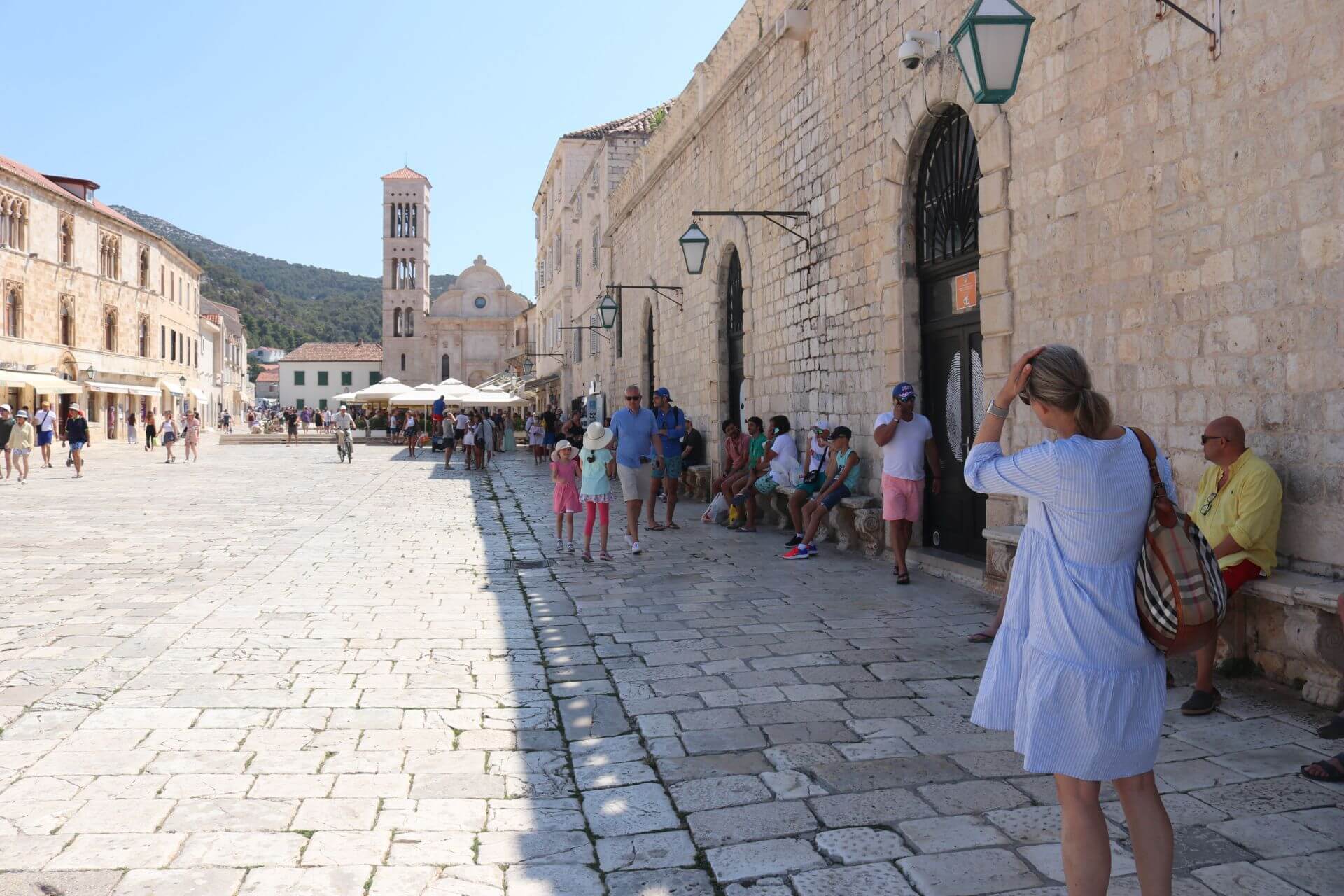
Every bit of shade welcome © Nina Lelas
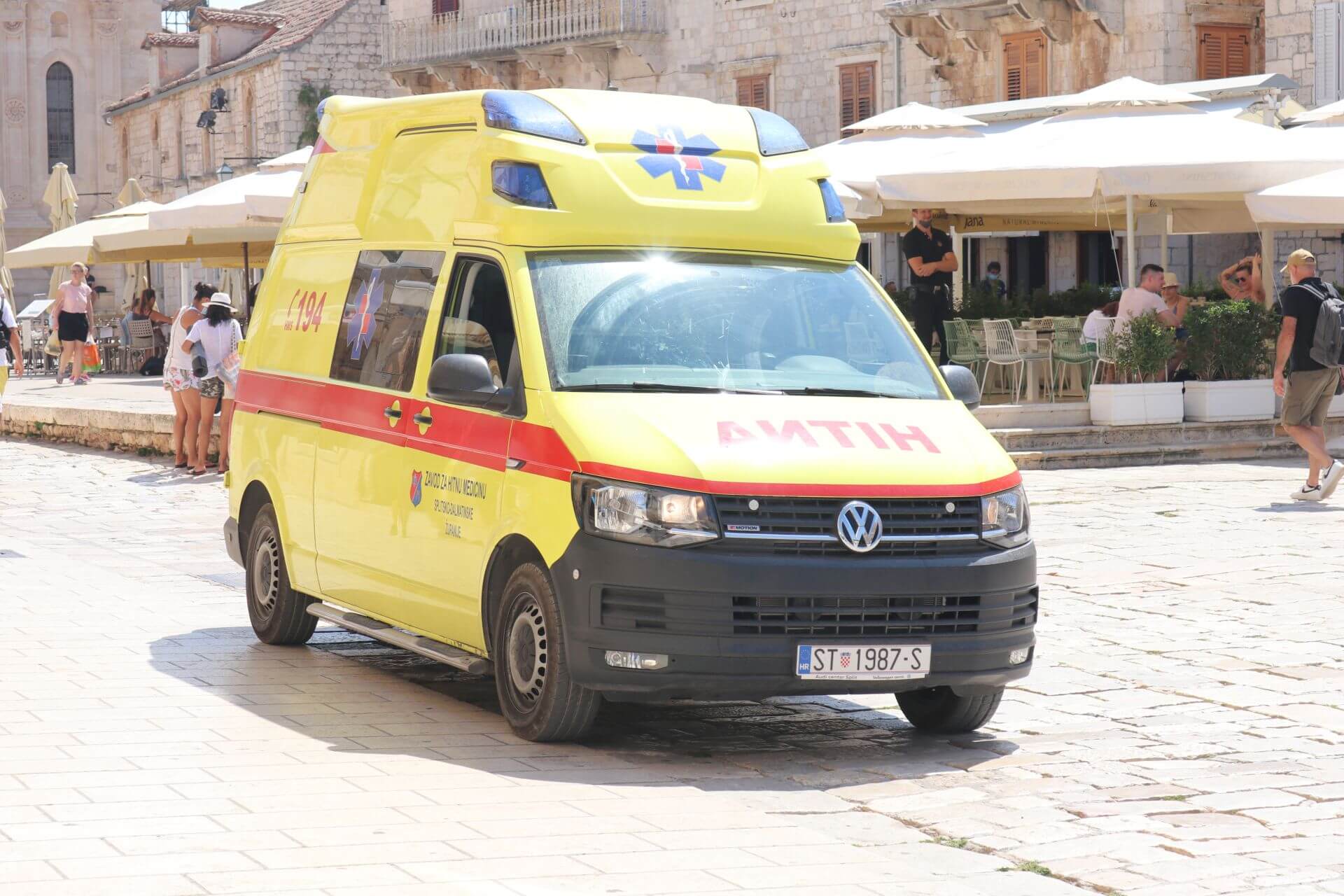
Apart from joy, Hvar can provide healthcare if needed too © Nina Lelas
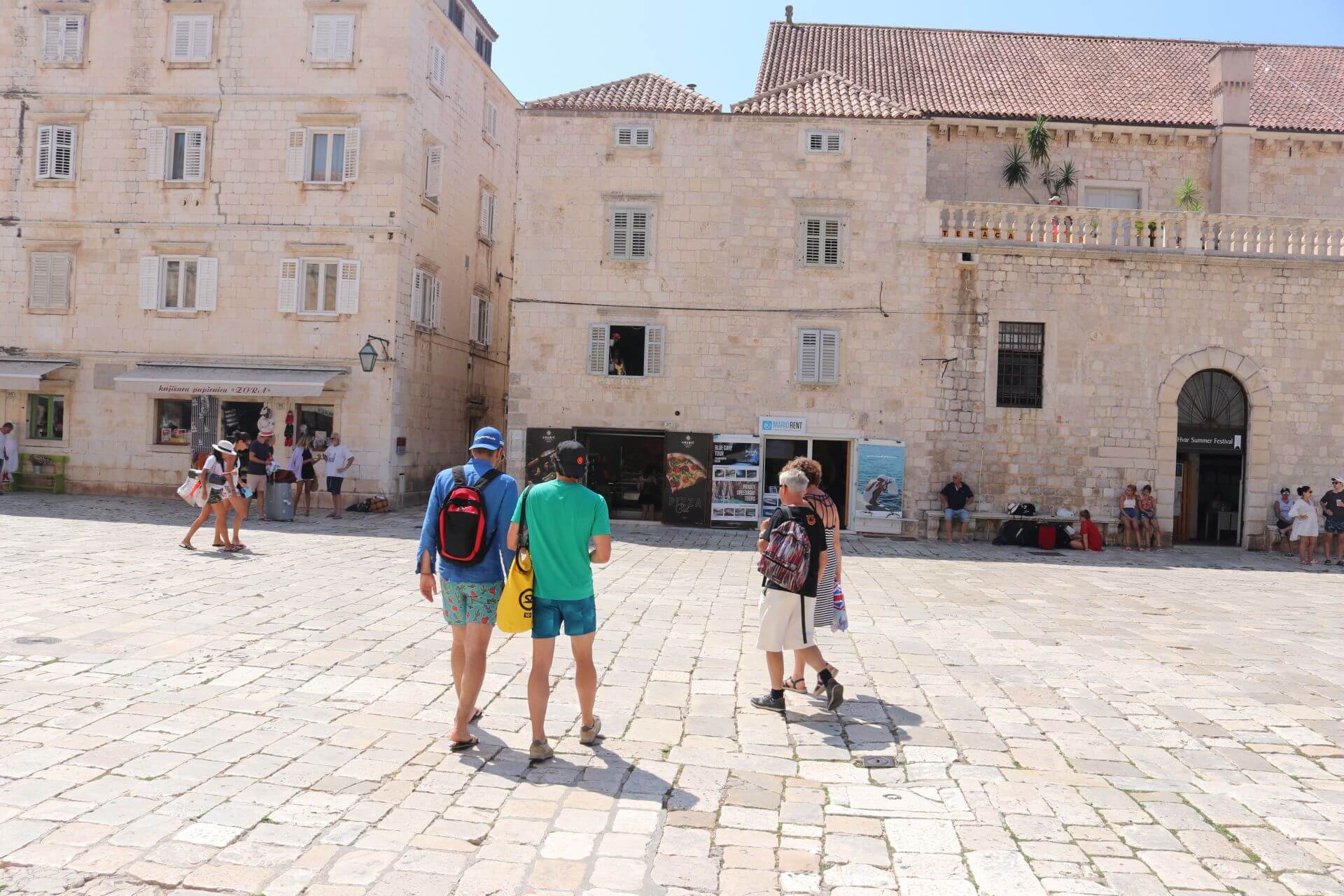
The main square beauty attracts people from every direction © Nina Lelas
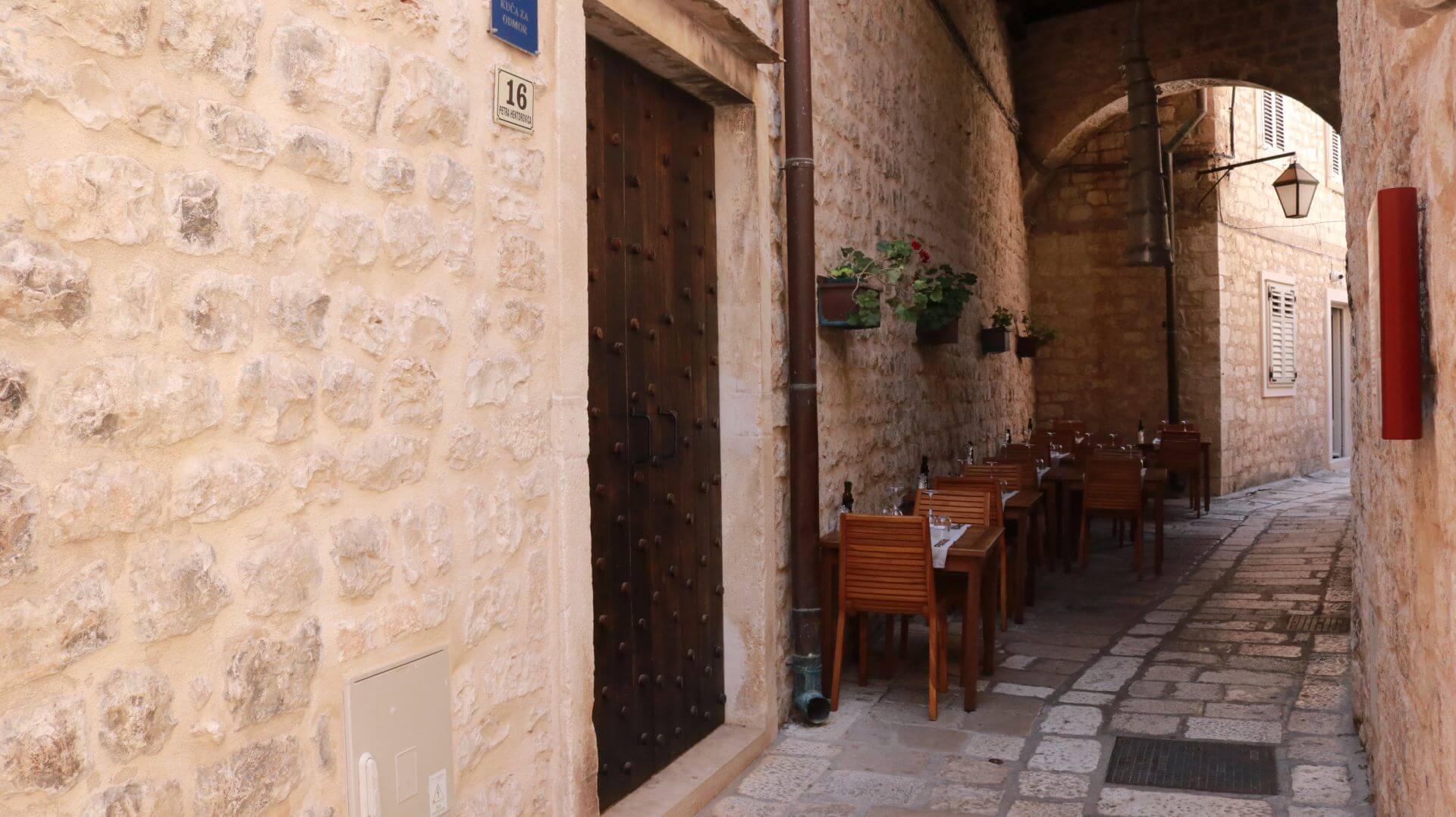
Lovely side streets of Hvar town © Nina Lelas

Shade and vegetation of chilled side streets © Nina Lelas

Admiring details on every corner © Nina Lelas
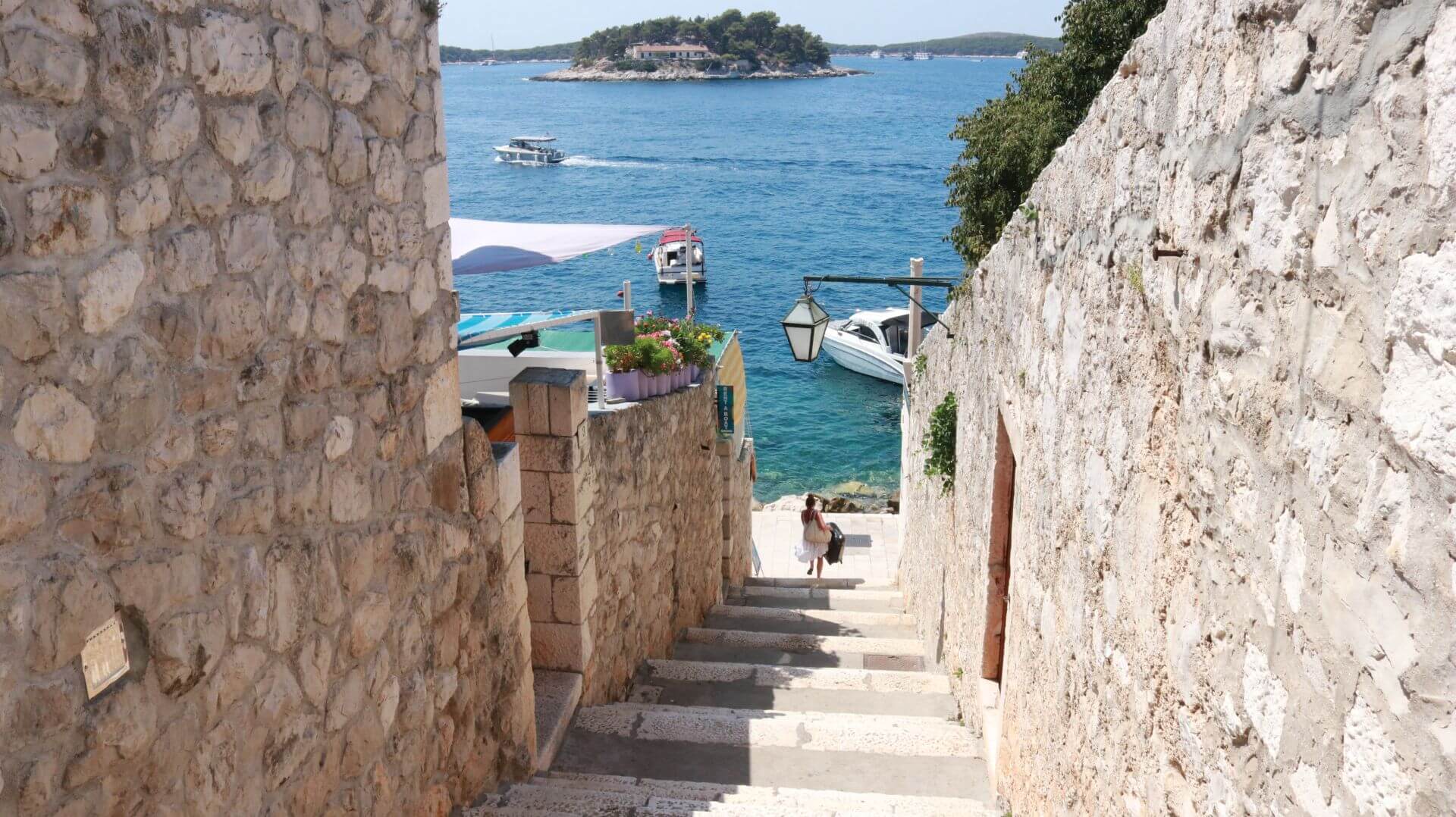
Back to the Adriatic © Nina Lelas
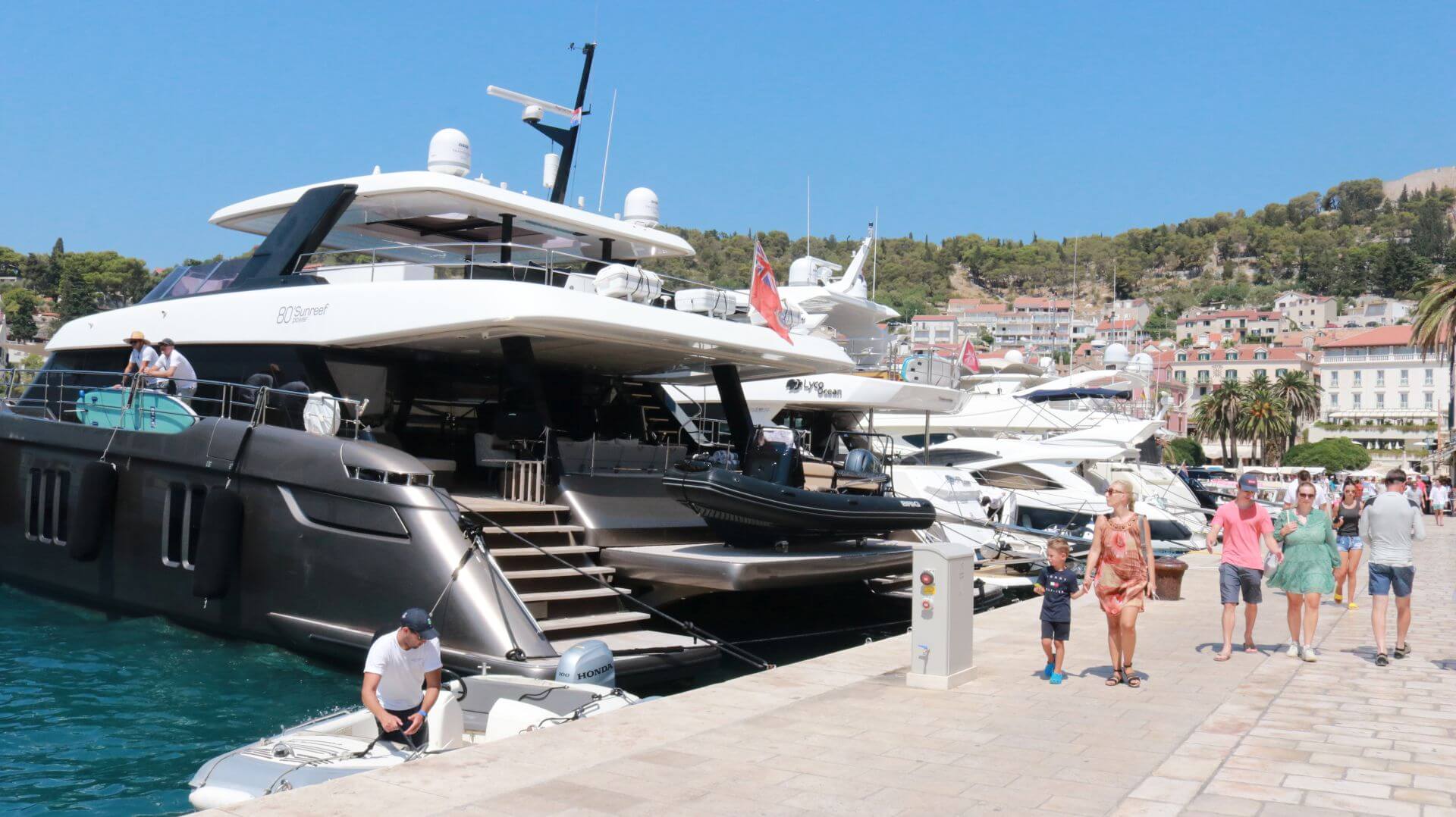
Yachts are nice but you don't have to drive, only relax when on catamaran © Nina Lelas
Learn more about Hvar on our TC page.
For more about traveling Croatia, follow TCN's dedicated page.
Hvar Town Budget Restaurants: Yes, They're Real
August 16, 2021 - Finding himself in a luxury destination with a not so luxurious budget, TCN reporter Ivor Kruljac avoided starvation by locating Hvar Town budget restaurants. Here are his suggestions.
The words ''cheap price'' are very relative. It's much easier to determine a high price but what qualifies as actually cheap is a much tougher question. In that spirit, Hvar Town, known as one of the more popular and therefore more expensive destinations, lives up to its reputation. Last week, the Croatian media landscape was stunned by the bill issued at one of Hvar's elite clubs. The undoubtebly fun night that featured loads of high-quality beverages such as four 4,800 kuna worth bottles of Don Julio tequila reached the total amount of 99,154 kuna.
A one night spending spree on that level is downright impossible from journalist's income.
So, for the week in Hvar, it was convenient for my paycheck to serve both to feed my stomach after a relaxing day of SCS (swimming, chilling, and sightseeing), and in the meantime, why not inform the public on Hvar Town budget restaurants. Again, ''cheap eats'' may be a hard to define term, but here are some solutions which will nevertheless see you well fed for a little over 200 kuna. Three restaurants after which you don't have to file for bankruptcy, but you'll still have an enjoyable and quite the in-style dining experience. Why only three, you may ask? Well, I can't confirm these are indeed the only three options, but, well, there was sort of a limited budget involved in the research.
1.) Alviž
With a bus not really being the top of the list of options for the high class, it's convenient that one on-budget restaurant is located right at the Hvar Town bus station. From the outside, Alviž looks like some small diner where you might have to bump into other guests crowded into a small place as you munch on wooden tables and chairs. You might feel hesitant to come in, but one look at the menu that promises delicious meals at much more affordable prices makes it worth visiting. Once inside, you realise that the space is actually luxurious as you're taken to the backyard with a real Dalmatian ambiance. Wooden tables underneath brick rooftops and wooden ledges make way for wine, and you are in for a fantastic dining experience. The red and white wine options are fantastically refreshing, but sadly, the beer options are scarce. The food is served quickly and cooked to perfection. You can find a variety of dishes for under 150 kuna, but as the sides are purchased separately and you need to add the drink, you're in for bill of just over 200 kuna usually. Tested and recommended: Fried squid and four types of cheese pizza. Sadly, the fried squid would have gone well the traditional Dalmatian blitva (chard), but one minus to the venue is that you can't order it as a separate side-dish. Still, the squid and fries go together very well.

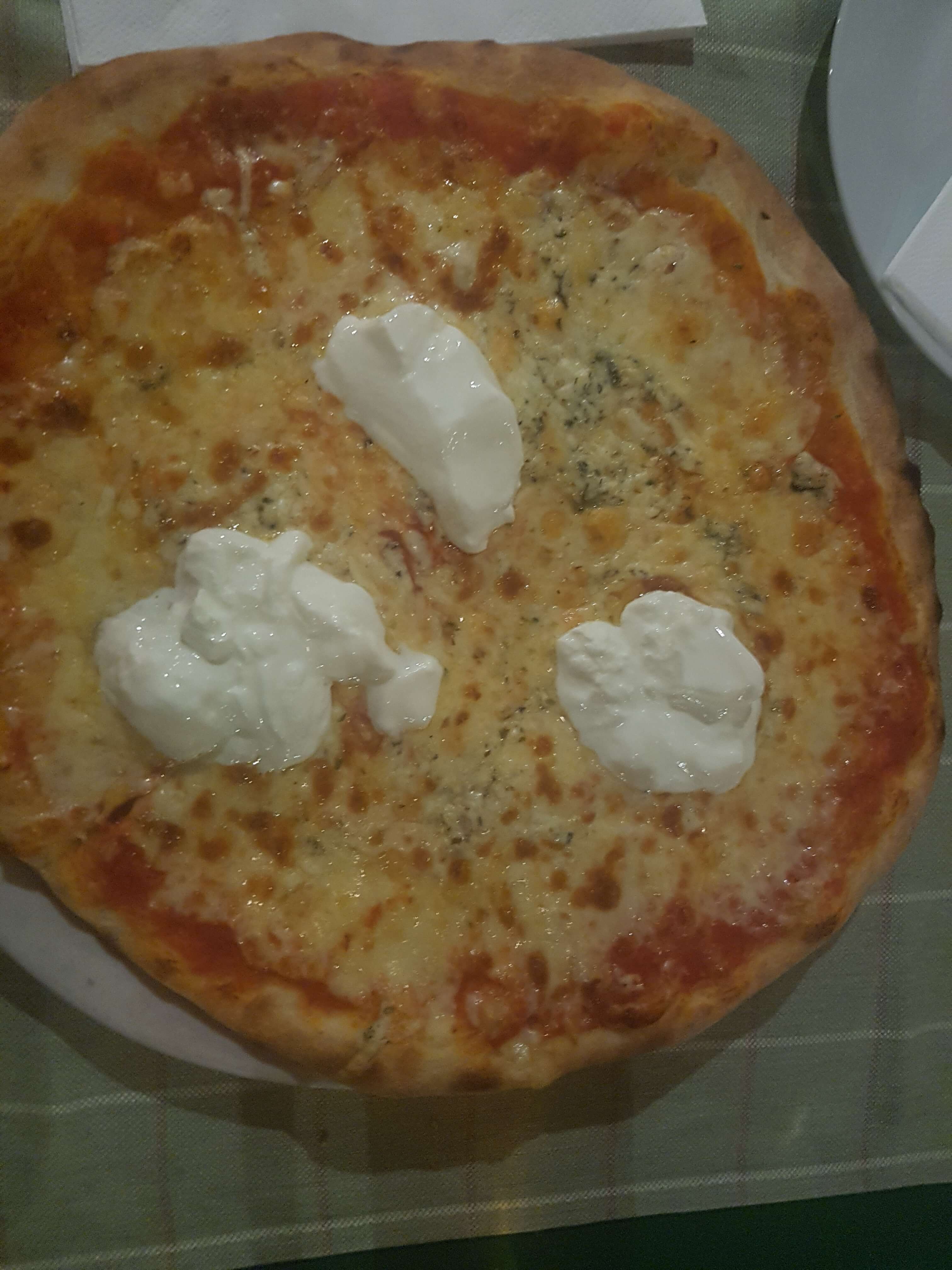
Fried squid and four types of cheese pizza © Nina Lelas
2.) Villa Dinka
Here's another restaurant with a strong Dalmatian vibe squeezed in between the Amfora and Pharos hotels. This time, there are no wine grapes growing above you, and it looks a bit more formal, but it is nevertheless a cozy place to dine with a stunning view of the Adriatic and the Paklenski islands to trigger your appetite. Again, the sides must be ordered additionally, but along with one drink, the bill doesn't hit higher than a little over 200 kuna. When dining with one more person, meat platas for two are definitely the best bet for meat lovers in Croatia to both get full and to save money. Villa Dinka is no exception to that rule, but they upped their game and topped the usual meat offer of Čevapi, shish kebab and steaks by also adding lamb chops and beefsteak. A delicious upgrade!
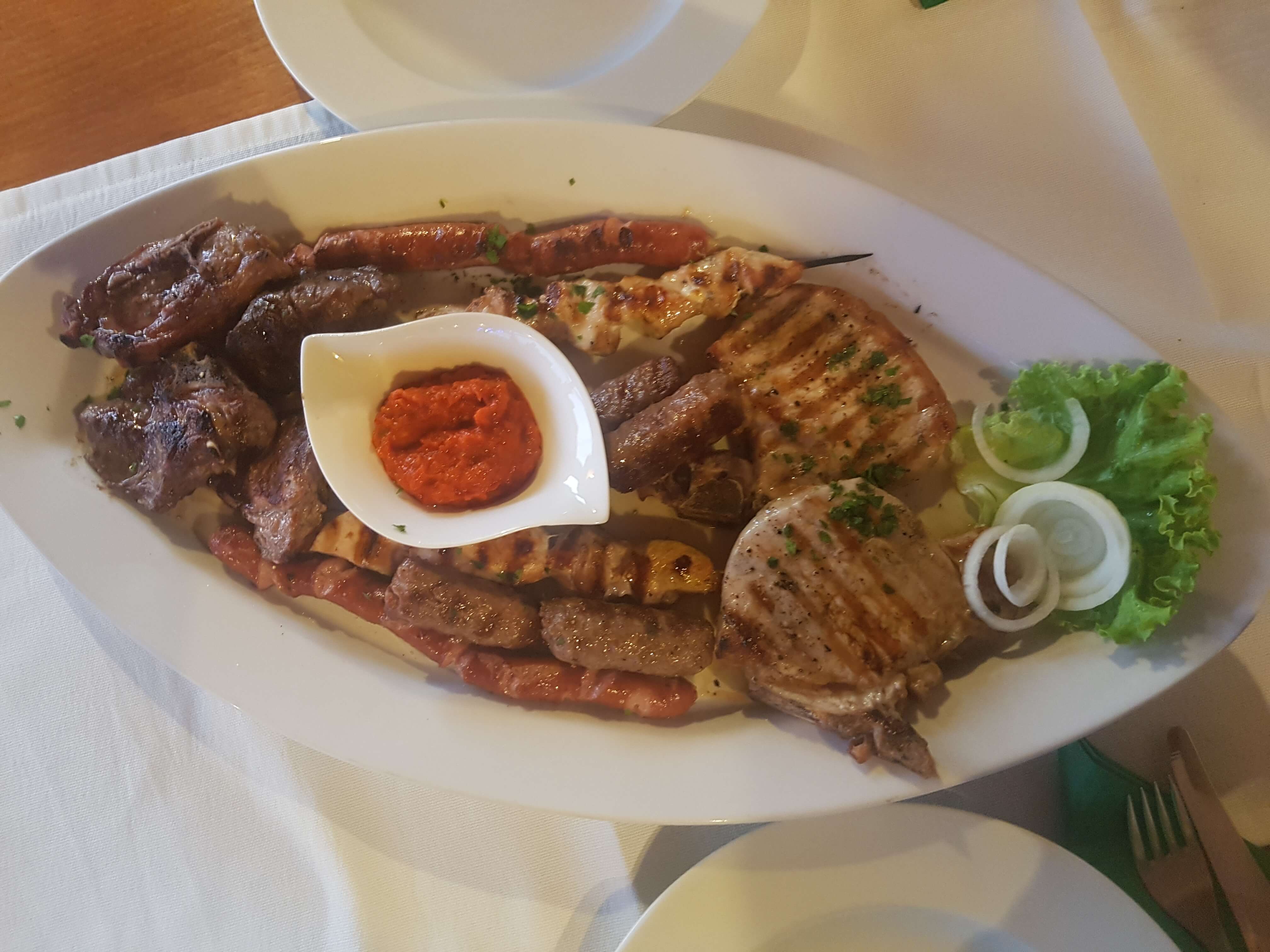
Meat plata from Villa Dinka © Nina Lelas
3.) Đordota Vartal
Not too far from the Franciscan Monastery, Đordota Varta seems to have been crowned as the best on-budget restaurant in all of Hvar Town. The restaurant was completely filled, but people were persistent in waiting in line, hoping to get some food. Once inside, you could see why. Another typical Dalmatian restaurant, with the craftsmanship of Dalmatia being the leading theme as the restaurant is decorated with saws and other tools people on Hvar used in the past. The dishes are accompanied by sides, but you can order more if needed. The tuna steak is absolutely divine, with big portions cooked to perfection, perhaps one of the best-grilled tuna steak's I've had in all of Croatia. For meat lovers, the satisfactorily filled portion of the traditional Dalmatian Pašticada with gnocchi is a must. The beer and wine selection were alright, but not very memorable thanks to the restaurant's short but well-executed cocktail list, with 50-60 kuna per cocktail it obviously isn't the cheaper thrill to get, but these prices are quite standard for coastal Croatia and more accessible than many drinks from other cocktail bars Hvar has to offer. One sip of that delicious pina colada pays up a triple in pleasure.
If you're too hungry to remember to reserve your table and you're also too hungry to wait for the aforementioned goodies, you can also opt for the restaurant's beach terrace. Sadly, over there, you can only order pizza, but the dedication of the staff will nonetheless make sure that pizza, while affordable, is next level compared to your usual experience.
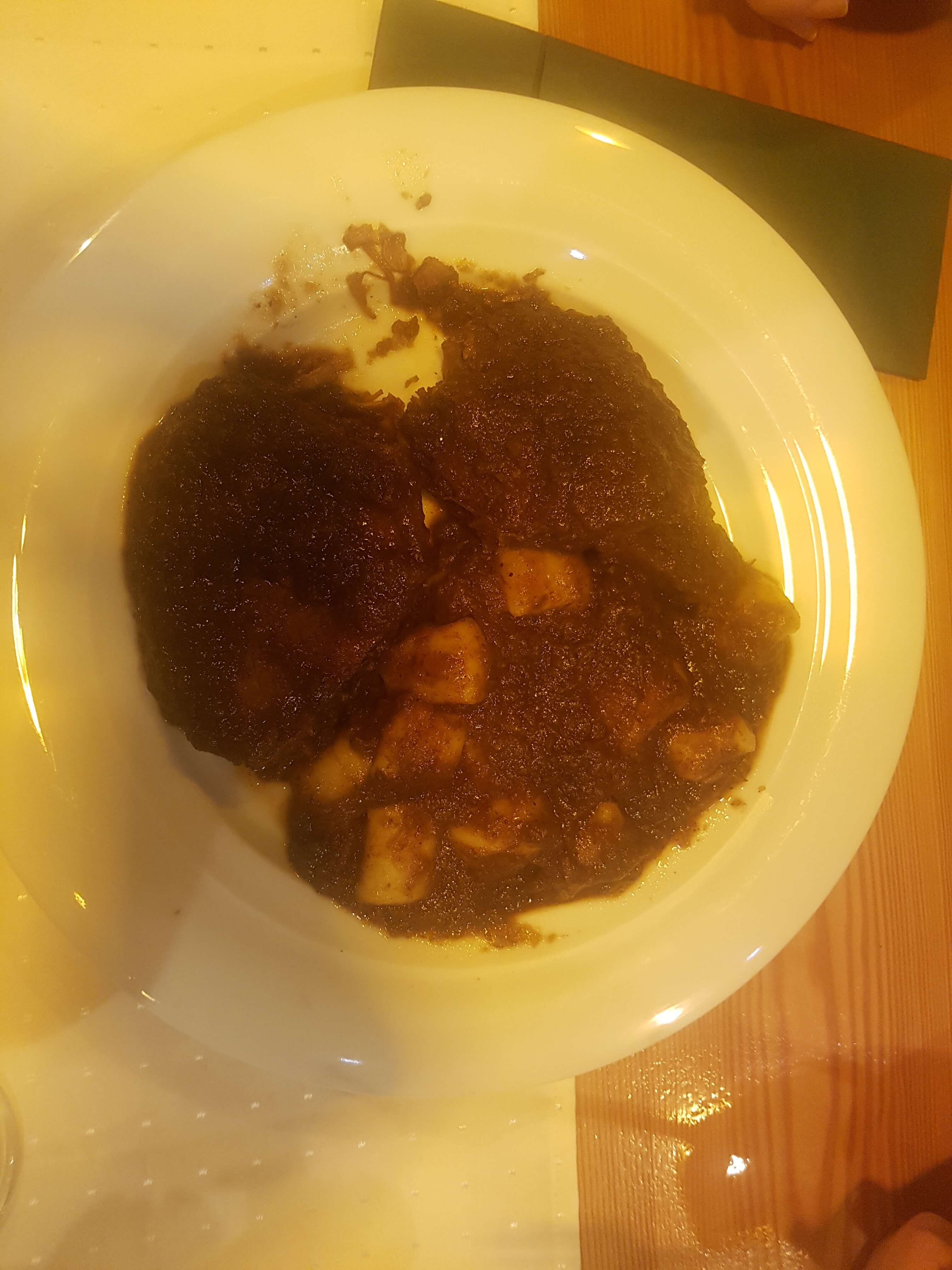
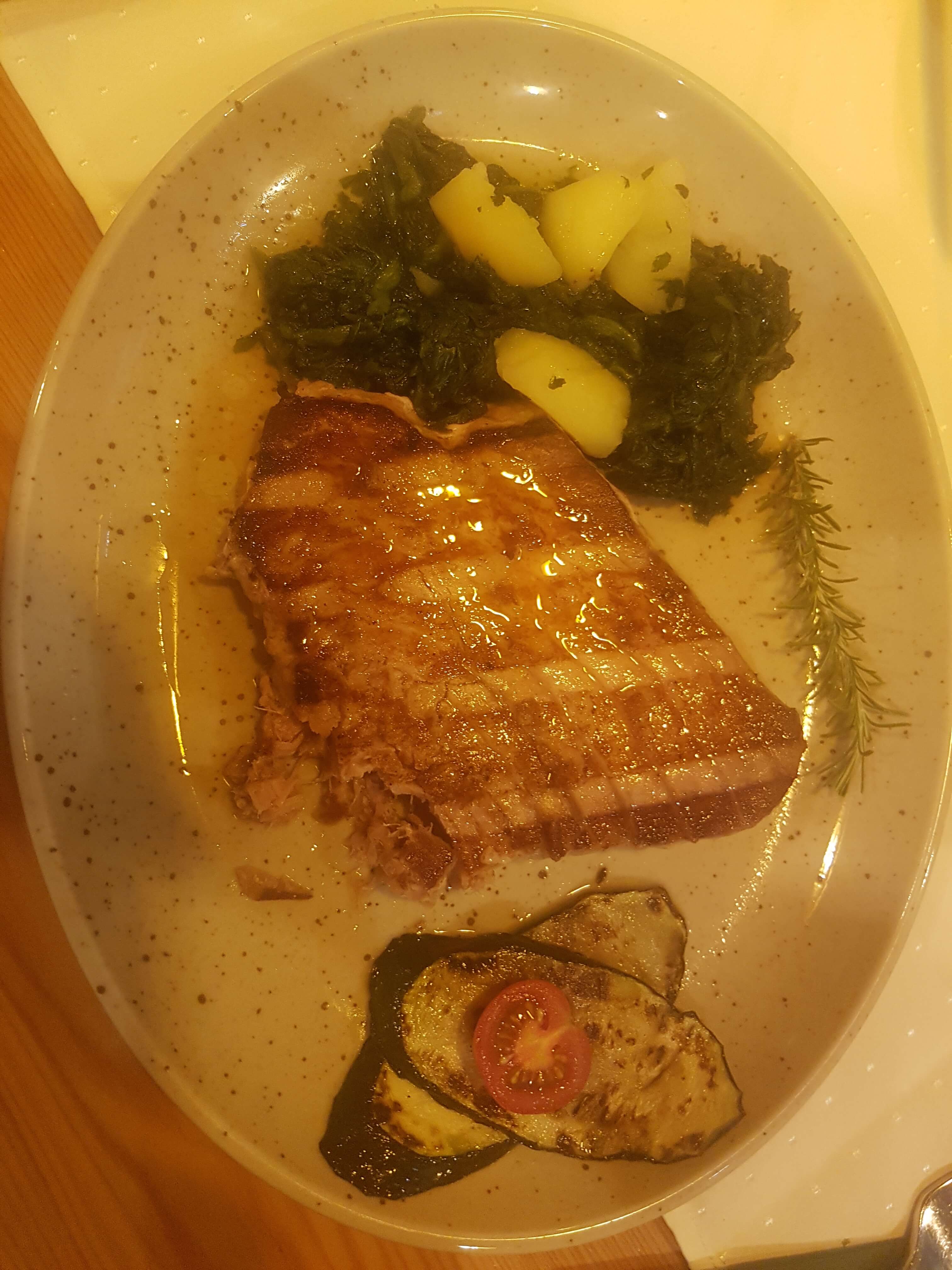
Delicious Pašticada and tuna steak © Nina Lelas
Learn more about Hvar on our TC page.
For more about traveling Croatia, follow TCN's dedicated page.
Croatian Beach vs Pool Dilemma: Arguments For Both Sides Overview
August 11, 2021 - Looking at the broad offer of swimming options on Adriatic, you may find yourself in the middle of a Croatian beach vs pool dilemma. TCN reporter Ivor Kruljac found pros for both sides.
With exciting history, heritage, and interesting experiences to be had, coastal Croatia and the Croatian islands known how to sell what they've got. The clear, refreshing, and clean sea has been the most valuable arsenal in Croatia's tourist offer from the very start.
In that spirit, it may seem unusual to see many hotels with glorious sea views and short walks to beaches that have pools, both indoors and outdoors. Sure, the indoor pools are great if you have the misfortunate of some bad weather when you're dying for a swim, but do outdoor pools really make sense next to the lovely Adriatic?
Well, both sides of this argument have valid points. Here is a shortlist of the cases when one dominates over the other in this epic Croatian beach vs pool debate.

Looking for safe fun? Then the pool wins
With Croats enjoying the reputation of being ready to help and watching over others, and even with some of the beaches having lifeguards, pools are definitely the safer option if swimming isn't your strong side. The majority of pools have a shallow and deeper end, and while the sea can suddenly become deeper than you what you've bargained for, the transition is much easier in the pool.
If you do get cramp or get in some sort of trouble, even if other swimmers don't respond, you can be sure that hotel staff will pull you out just in time. The rules of conduct (which you have to oblige to) ensure your safety and that of the other guests. The limits of a pool can make it easier for you to watch over your kids while they have safe aquatic fun. In addition, sea urchins or painful rocks on which you can hit yourself while entering the Adriatic, as well as small pebbles that can be annoying on the soles of your feet, aren't an issue in a controlled pool environment. 
Looking for space? Then a Croatian beach will win
If you feel claustrophobic in the small and typically confined limits of the pool, then a Croatian beach is the best place to go for a longer swim. With experienced swimmers being able to swim from one side of the pool over the other, the sea provides a better challenge in terms of routes and directions you can take. Additionally, pools can be quite crowded, and if you want to take a refreshing dip as some ''zen'' time for yourself, then chilling in the Adriatic can be done at a more considerable distance from others that came to enjoy the day.

Do you fancy a space reserved just for you? Head to the pool
We all know that moment of frustration when a beach is crowded like hell, and you just can't find a place to leave your towel for the life of you. As pools are limited to the guests of the hotel, you can rest assured that when you arrive poolside, you'll manage to be able to find a place to soak up the sun and get a nice tan after you're done with swimming as the hotel calculates the maximum number of people that they can accommodate at any one time (at least the good hotels do).

Broadening your circle of friendship? Then a Croatian beach wins
With the Croatian hotel scene being more and more frequently branded to attract certain clientele, those who are interested in meeting new people on holiday, can expect that other guests in the hotel are similar to them in terms of interest and lifestyle. That's great, but keep in mind that other guests may just be interested in chilling, eating, and sleeping in the hotel, and not really socialising. On the other hand, the world of the Croatian beach is much more dynamic and with long history of interesting real and fictional stories (in books and movies) about awesome friendships and passionate relationships which started with an exchanged glance at the beach; the beach is the place to meet new people.
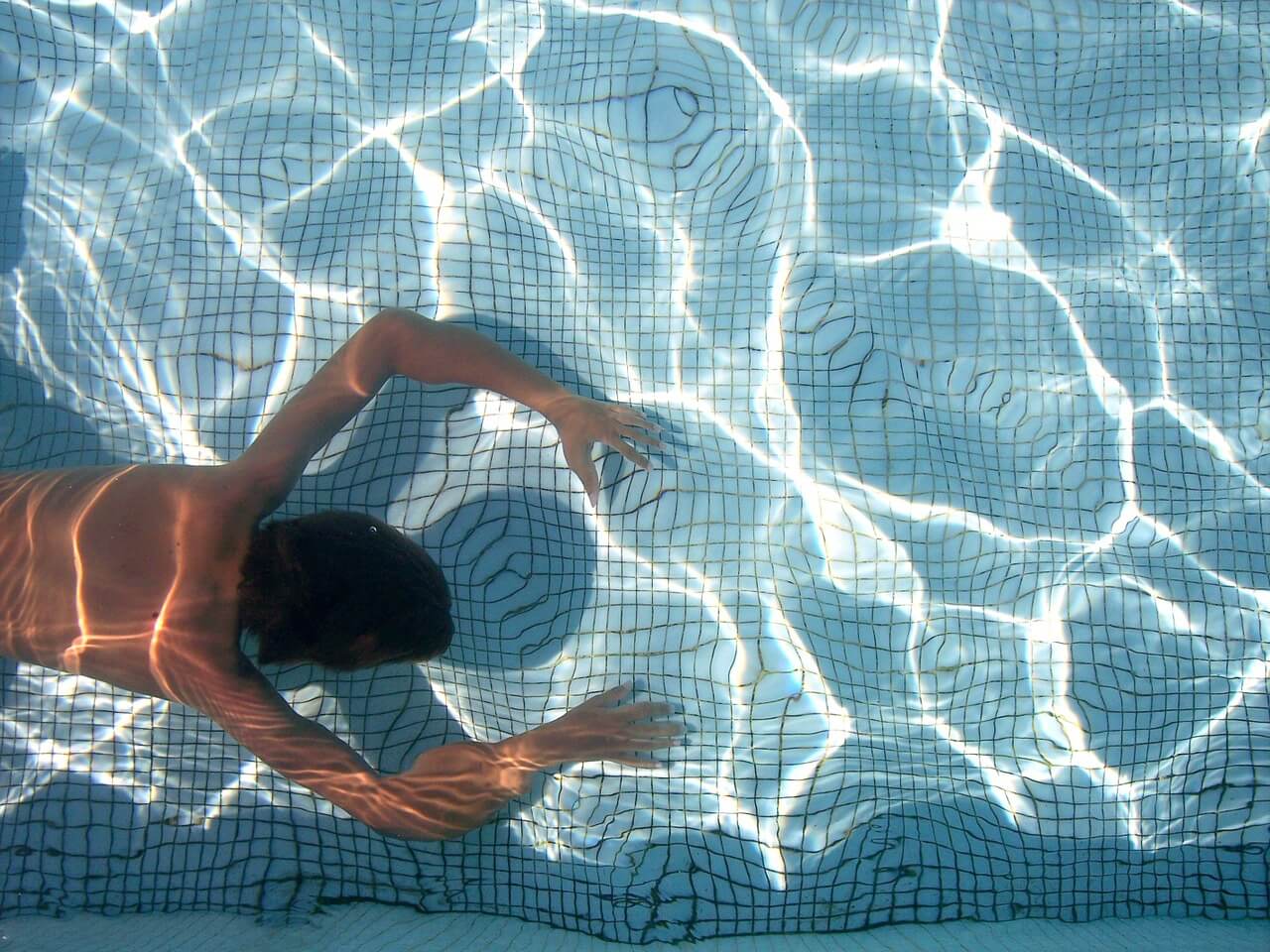
Want to be content with the water? The pool wins
When it comes to the Croatian beach offer, there are many types to choose from. Some beaches don't only offer unhindered access to the beautiful Adriatic as their lure but also much more, such as flotation devices to waterslides, sunbeds, and more. That said, certain pools also have more content than another. But, as a guest of the hotel, you can use everything that has been included in the price of your stay, while beaches (in the majority of cases at least) charge extra for these additional features. 
pixabay
Do you want to experience nature at its finest? Then the beach wins
With pools being man-made, they lack the joy of coming across unexpected discoveries which is what the sea offers. From pebbles to seaweed or sand underneath you to fish and other marine life sharing the swim with you, your experience in the Adriatic isn't just an opportunity to relax and freshen up but also to connect closely with nature. When a wave comes, those who are more in the market for excitement will surely have their blood pumping that bit harders as they are carried by the waves. You can also lie on the beach and enjoy the zen the sound of calm waves brings free of charge.

If proximity is what you're after, then the pool wins
When you're searching for a hotel, you probably want the one which is as close as possible to a beautiful Croatian beach. However, if you're a bit of out shape (with no desire to really improve that), and you learn that the promised three-minute walk to the beach lasts up to seven minutes or more at your pace and you just don't feel like walking that much as the heat is draining the life out of you, then the pools are right there inside the hotel complex. The only way to dive in for some aquatic refreshment faster is to take a shower in the hotel room, but really, where is the fun in that?
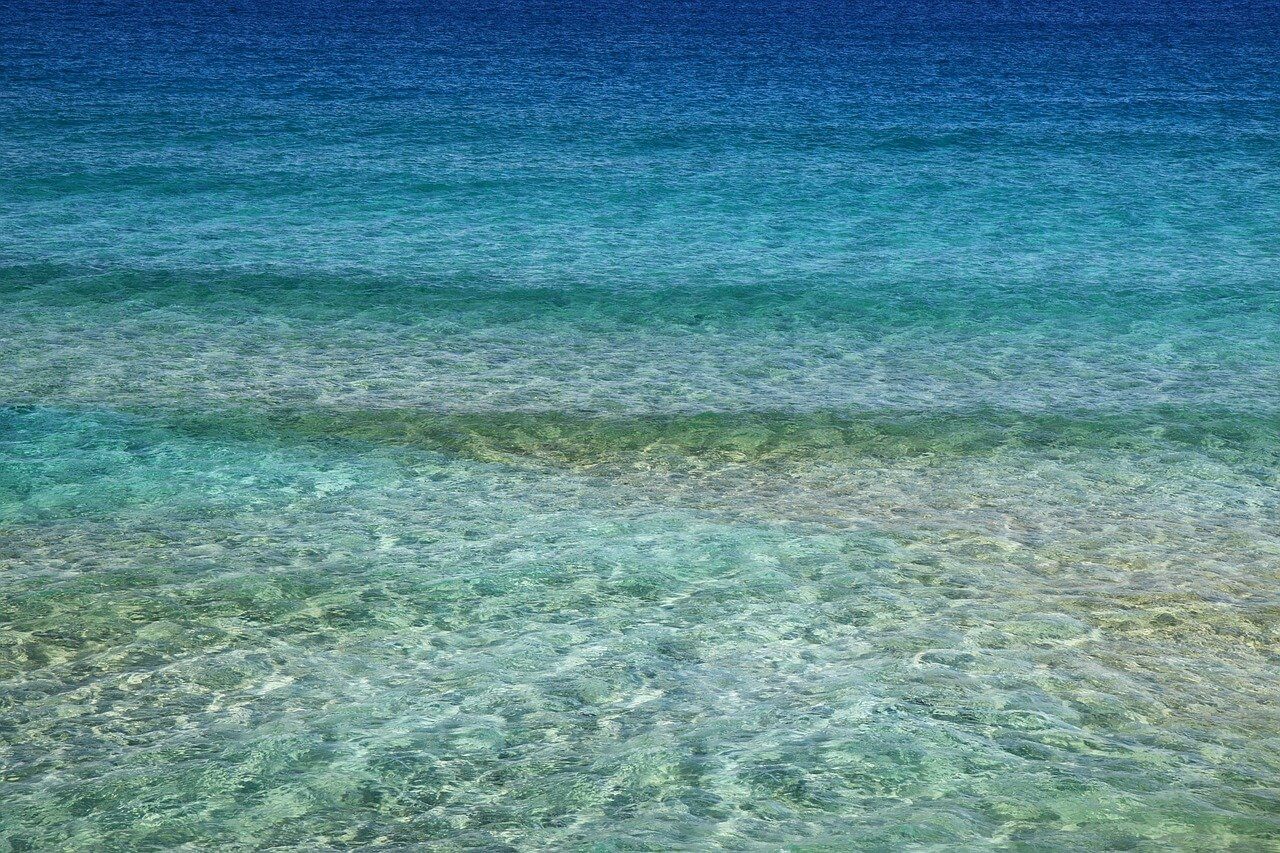
Viva la anarchia! – The beach wins
As mentioned above, pools are safer, not just because of their size and safe terrain, but also because of the rules they have. That said, if you've arrived at your destination listening to the greatest Sex Pistols hits and that little anarchist in you ready to get wild, head over to the beach to learn a whole new meaning of freedom. Swim where you want, jump from wherever you want (at your own risk, of course), and as long as you don't pollute the sea, pose a threat to other people or endanger the native marine life, where your sense of creativity ends is your only limit. Swim any time you want. You don't have to take a shower before diving in, and as many Croats will whisper to you in a clandestine manner when nobody is listening: you're free to pee in the sea if you need to.
The Croatian coast has you covered - the choice is yours
These are some of the arguments to help you decide would you prefer to be by the pool or next to a Croatian beach. Since the Croatian coast can offer both salty and freshwater options for your enjoyable holiday, it's best to try out both.
Learn more about beaches in Croatia on our TC page.
For more about the Croatian Adriatic Sea, follow TCN's dedicated page.
Pharos Bayhill Hotel on Hvar Full: Amazing 2021 Success Story
August 10, 2021 - With the Pharos Bayhill Hotel on Hvar full at the moment, TCN looks back at how the hotel started out back in 2016 and the newest adaptation in 2021.
The tourist season is going well for Croatia in 2021, and if the crowded streets of coastal Croatia are not enough proof, the guest count of Pharos Bayhill Hotel in Hvar Town, one of Croatia's top island destinations, says it all. Every room is filled as a fantastic season continues for one of the swankiest accommodations on the island.
Dating back to the 60s, Hvar's Pharos Hotel, a member of the Sunčani Hvar hotel chain, received a makeover in 2016. As TCN reported on the opening party five years ago, not only did the event see Hvar's VIP and locals attending the main event, but the hotel was already filled with guests who had started arriving two weeks before the official opening. And from the very start, it targeted young people.
After a decade of no investments, Pharos was the first hotel to stand out for Sunčani Hvar. From the start, its concept was adjusted to the younger crowd, those we'd now call millennials (both those who fit the group age-wise and for anyone who feels like one).
These adjustments to the younger market were casual, informal, and evident in every single detail – from the room design (with pop art comic strip decorations) to the uniforms and the attitudes of the employees.
The hotel's target markets were the UK and US, and the effort was rewarded with success back in 2018 when the Times magazine praised Pharos for being affordable and it made it to the list of top 30 best holidays to be had in Croatia that year.
Still, one could say the price is a relative term.
Affordable for an average UK citizen, it may not really be the case for the same target groups from Croatia, Slovenia, Austria, and Germany. Pharos provides quality accommodation, but for people who don't look for four or five stars hotels, but want a quality three-star accommodation. Of course you have to be ready to pay for it.

Inviting pool at Pharos © Pharos Hvar Bayhill Hotel
With a quality reputation building for Pharos, the dramatic plot twist in 2020 tourism required them to adapt the hotel to achieve the success it currently enjoys.
With a brief look around the terrace and lobby, one can see staff wearing masks and watching over the guests who, in return, can feel relaxed and safe and truly take a break from the virus. These adaptations aren't evident only in Pharos which managed to keep its relaxed and casual atmosphere, but in the other members of the Sunčani Hvar hotel group as well, as modelled by the best standards from the world's top hotel companies and chains.
New procedures and standards were defined in regards to COVID-19 itself. Every employee who enters the Sunčani Hvar system is either vaccinated or tested before entering, and special room cleaning procedures were introduced. Each room has a clean seal that guarantees that the room hygiene was checked and everything is good.
In addition, the unprecedented situation which dominated 2020 saw the hotel adapt in terms of pricing too and become more accessible to Croatian tourists. In 2021, the hotel also opened its doors a little further to being more family oriented, too.
As the summer season continues, every room is filled, and while that will depend on measures and other things, current announcements are good and could push Pharos as far as September.
Croatian epidemiological measures also suspend events and gatherings, and regular DJ nights that used to entertain the guests at Pharos are for the moment a nostalgic memory.
However, with the aforementioned changes, the terrace is still alive, with more ambient music and the intimate socialisation of guests at the other tables.
With DJ nights not being appropriate to the current situation, Pharos experience is now switched to the Mediterranian ambient, to the Mediterranian garden.
The offer of Pharos, which always attracted younger people, people hungry for adventure and recreation, also offers activities such as kayaking and surfing.
With sports and boat renting on offer, other activities Sunčani Hvar hotels offers include options known as ''Sun & Sea'' (where you can visit and cruise the islands, explore caves, and more) and ''Dine & Wine'' (which takes you on an impeccable journey of wine tasting accompanied by traditional Dalmatian Peka feasts), proving Hvar and its surroundings will never let you down when you want a holiday to remember.
Learn more about Hvar on our TC page.
For more about Suncani Hvar, follow TCN's dedicated page.
Salty Adriatic Sea: New Research Raises Concerns
Aug 5, 2021 -The salty Adriatic Sea became saltier in 2017, and even in 2021, the salinity levels are the highest ever recorded, warns the Ruđer Bošković Institute (IRB).
With known salty areas such as Pag, you would expect the Adriatic sea to be very salty, and it is. However, over the years, it has become even saltier, as the Ruđer Bošković Institute (IRB) stated.
As the IRB wrote in a press release, a Croatian scientific team collaborating with their Italian colleagues published a study that shows so far unrecorded levels of salinity in the Adriatic. Their work was published in the prestigious Frontiers in Marine Science Magazine titled ''Observation, Preconditioning, and Recurrence of Exceptionally High Salinities in the Adriatic Sea“.
As the IRB explained, it was in 2017 around Palagruža where the Adriatic sea's salinity reached a record of 39.1 per mille.
''In addition, with minor oscillations, the high salinity in the first 200 metres of depth was kept within the central part of the southern Adriatic, and it has remained the case until today. For example, at this moment, the salinity levels in the central part of the southern Adriatic is over 38.8 per mille in the whole water gauge, and 39.15 per mille by the surface,'' added the IRB.
This measurement was the lead for the scientists to conduct further research that incorporated various available data acquired via multiparameter probes, autonomous ARGO buoys, remote-controlled submarines, and satellites that measure sea level's surface. The data from an oceanographic model of the Mediterranean sea (which combines satellite and other measures, thus giving the most quality 3D view of the oceanographic field) was also used.
Sure enough, the salinity rise has been explained. On one hand, the enhanced flow from the Middle East and the Ionian sea are to blame, but on the other, there are changes in the Adriatic sea itself.
''The processes (in the Adriatic sea) occur on a scale of several days to a decade, and have four key elements,'' they explained from IRB.
The first one concerns Adriatic-Ionian bi-modal oscillation affecting physical and biogeochemical conditions in the Adriatic through a period of 5-10 years, which, in the last decade, has caused a serious influx of salt and oligotrophic waters (waters which are too low in nutrients to support life).
The second process concerns low river flows due to the low amount of rainfall, while the third process concerns the enhanced amount of solar energy on the sea's surface during summer and early autumn. Finally, with the weather warmer than average and with very little wind, the water gauge is divided into the hotter surface level and colder central and bottom levels. This leads to the fourth process that includes vaporising and the loss of water from the sea surface.
''Three out of four of the aforementioned processes have already been documented in the Mediterranean as a consequence of climate change that in the future will bring warmer, drier summers and as a consequence, more heat and the higher salinity of the sea surface,'' they warned from IRB. They added that this is a threat to marine life which depends on the temperature, the level of salinity, and other factors that will be sabotaged with these changes.
With the Adriatic sea and its marine life being one of the treasures Croatia has, the global response to climate change must start giving results as fast as possible, and Croatia cannot afford to miss out on contributing for the sake of the country and the world in general.
Learn more about beaches in Croatia on our TC page.
For more about science in Croatia, follow TCN's dedicated page.
How Far Can Zagreb Grič Cannon Fire? Ideal Conditions View of the Fire Range
July 21, 2021 - Ever wondered about the Zagreb Grič Cannon fire? TCN reporter Ivor Kruljac played with Google maps to provide an answer in ideal conditions.
While Zagreb Grič Cannon did not shoot at the time of writing this article, it is still one of the key symbols of Zagreb, and memories of its bang during midday is a vital part of the living in Zagreb experience.
As TCN previously wrote, the Grič Cannon was first introduced on January 1, 1877, and was located at the State's Meteorology department, back in the times when Croatia was part of the Austro-Hungarian Monarchy. It wasn't until 1927 that it was moved to Lotršćak, where it is situated to this day. In addition, the current cannon serving this purpose is actually the fifth to do the job and was donated to Zagreb by the Yugoslavian National Army (JNA), during Universiade.
Apart from signaling noon, the old legend says the Grič Cannon also served a defensive purpose. As TCN previously wrote, legend has it that the Ottoman commander Hasan Pasha (Hasan Paša) settled his army along the coast of the Sava river, in today's area of Novi Zagreb. He was preparing to cross the river and invade the city, but before that, he was about to have lunch, and Zagreb fired a cannon in the Ottomans' direction, close to Hasan, blasting a chicken he wanted to eat. The shot scared the hell out of the Ottomans, and they retreated, leaving Zagreb totally intact.
The legend itself is part of a book titled ''The Grič Cannon legend'' in which writer Dubravko Horvatić has gathered 20 Croatian legends, and the book is a mandatory book report title for Croatian pupils in the third year of elementary school.
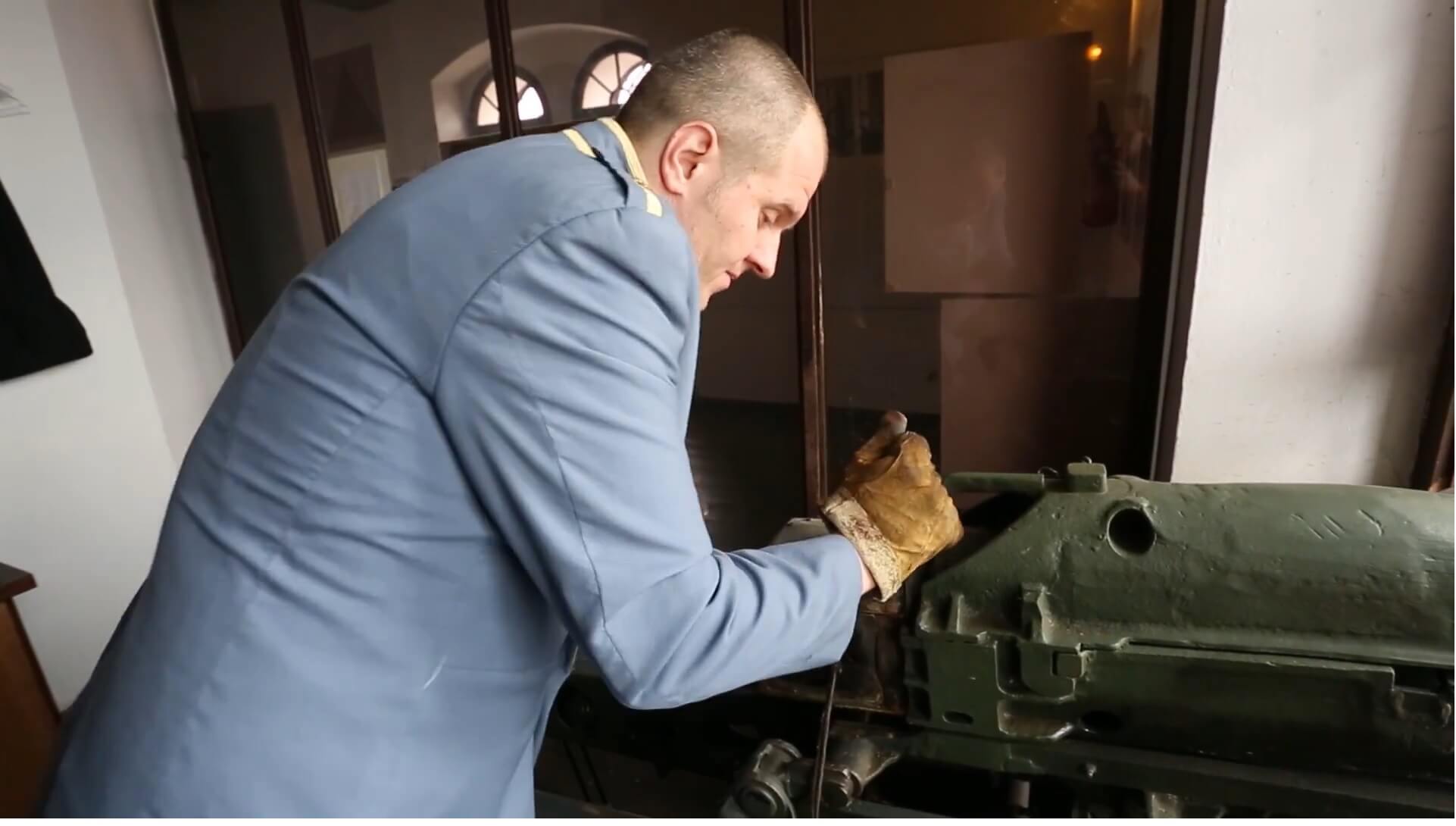 Preparing the cannon, screenshot / PIXSELL
Preparing the cannon, screenshot / PIXSELL
Legend vs facts
With the story taking place way back in the 16th century, it's obvious the tale is just a legend as the cannon wasn't introduced until the 19th century. Still, it's a cool story, and a bit of a twisted mind can't but help think: what's the range you could actually shoot with the Grič Cannon?
As the Wikipedia page says, and as a member of the Zagreb Tourist Board in Lotrščak tower confirmed to this sleuth reporter, the current cannon's range is 7,929 metres (almost eight kilometres), and the sound of the blast has a solid 140 dB.
Legend says Hasan Paša was on the coast of the Sava river, which means he was in southern Zagreb, and sure enough, the Grič cannon is facing south from Lotrščak. The cannon floor also has windows looking in each direction, meaning you could move the cannon to north, west, or east.
When playing with Google maps distance measuring tools, you can see that the smallest distance between the Sava river and Lotrščak is, give or take, about 3,1 kilometres. So, the current cannon, under the right angle, could easily make that shot.

The distance between Fort Lotrščak and Sava river, screenshot / Google Maps
Apart from the possibilities of buildings and hills messing up the shot, there are other things that need to be taken into consideration. As the Department of the Army U.S. Marine Corps identified back in 1996, in their manual, there are many factors that affect artillery fire.
Muzzle velocity, projectile weight, range wind, air temperature, air density, even the rotation of the Earth, not to mention the overall condition of the barrel, all of which are challenges that could limit the cannon's full potential. And yes, Google maps isn't really the most precise tool on the planet, but let's take a shot in the dark and see how far the Grič cannon could actually fire (keep in mind these projections are made solely based on the maximum range, and the factors aren't taken in account but are mentioned for the sake of trivia knowledge).
South! Aim! Fire!
Let's start from the cannon's current position. Assuming no buildings, hills, or anything else gets in the way, and you're a physics genius that managed to isolate yourself in Lotrščak with live ammo and achieve a clear straight shot, your cannonball makes an impact all the way in line with Donji Čehi (but a bit away to the east from that place). Donji Čehi, along with Gornji Čehi, used to be independent villages but are today part of the City of Zagreb. With only 1,72 km2 of length, the place is inhabited by 232 residents, based on a 2011 census.

Grič Cannon maximum range to the south, screenshot / Google Maps
West! Aim! Fire
Continue clockwise and set your cannon to take a shot towards the west, with a range of little under eight kilometres. You can score all the way to Krnska street in Gajnice. Krn is both a name of a mountain and a peak (2244) in neighbouring Slovenia. The mountain is a part of the Triglav National Park in Slovenia (and if this side note makes your attention turn to Slovenia, be sure to check our friends at Total Slovenia News). Gajnice is a neighbourhood in Zagreb that is inhabited by around 10,000 residents. The neighbourhood is notorious for its pretty lousy connection with the rest of the Zagreb, and local residents often complain about infrequent buses that connect them to Črnomerec from where they can travel to the city centre. Well, at least, the centre doesn't aim at them with a cannon.

Grič Cannon maximum range to the west, screenshot / Google Maps
North! Aim! Fire!
The new target, or perhaps better to say lucky shot, lies towards the north. Don't worry about Medvednica mountain getting in the way of a clear shot towards Zagorje, as the range isn't long enough. The shot will hit Medvednica mountain, more precisely, to the close proximity of Tusti Vrh. This location is 648 metres above sea level and serves as a stand for a communication station with some antenna polls. But, there's no need to shoot the place up and destroy a lovely piece of nature, which also serves as an important social role in regards to telecommunication. Instead, you can visit the place as the Gračani trail leads there.

Grič Cannon maximum range to the north, screenshot / Google Maps
East! Aim! Fire!
Finally, it's time to ruin someone's day in east Zagreb (fortunately, no person was hurt during these simulations in reality). Specifically, this applies to whoever lives in Retkovec III near Bruma Interijeri d.o.o., a company specialised in woodwork.
Petkovic is a neighbourhood that is part of the Dubrava district. It's mostly a residential place, like much of eastern neighbourhoods considered to be a bit of a rough area to live in. Still, things aren't as bad as they were as before.

Grič Cannon maximum range to the east, screenshot / Google Maps
Shooting blanks
Again, it's worth noting these projections aren't accurate science and imply conditions which are perfect. Of course, in an ideal world we wouldn't need firearms and everyone would be living in peace. In reality, where these ideal conditions don't apply, residents of the aforementioned areas, but also citizens in general, can be relaxed, as the ranges are irrelevant.
 Shots fired aftermath, screenshot / PIXSELL
Shots fired aftermath, screenshot / PIXSELL
''It's worth noting the cannon is modified, and it can't fire live ammo,'' warned the Zagreb TB official, who was a bit puzzled as to why I would even ask her for the potential range of a weapon overlooking the Croatian capital from Fort Lotrščak. But, as I'm sure any researcher will confirm, scientific curiosity often calls for asking controversial questions.
Learn more about Zagreb on our TC page.
For more about history in Croatia, follow TCN's dedicated page.


